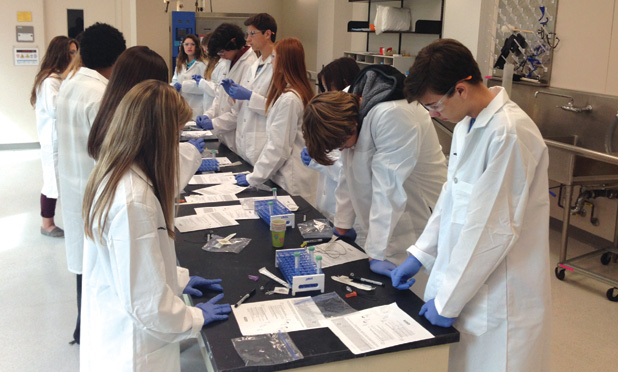As the global economic landscape evolves, the need for science, technology, engineering, and mathematics (STEM) careers will increase substantially over the next decade, yet the disappointing reality of the U.S. education system casts a bleak shadow over this promising forecast. According to the U.S. Department of Education, only 16% of U.S. high school seniors are sufficiently proficient and interested in mathematics and science to pursue STEM careers. Essentially, the United States is facing a potential educational crisis.
Historically, innovations and breakthroughs within STEM disciplines fueled the U.S. ascent to the status of industrial powerhouse. Now, according to the latest Program for International Student Assessment survey, which assessed 510,000 15-year-olds representing more than 65 economies, the United States ranked 36th worldwide in mathematics, reading, and science. Such results have shown a declining trend in U.S. student performance that has now made STEM education a priority. Efforts are being made nationwide to resurrect U.S. STEM education, with plans for 100,000 STEM educators to be developed and retained over the next decade. The goal is to have more than 1 million students graduate college with degrees in STEM disciplines. However, even goals such as these seem inadequate when only half of college and university graduates who earn STEM degrees actually pursue STEM careers.
Rectifying the Problem
To address the apparent lack of interest in STEM among U.S. students, the National Science and Technology Council organized a committee consisting of 11 federal agencies to coordinate and fund programs to increase STEM education, the Committee on STEM Education (CoSTEM). CoSTEM has developed a five-year strategic plan to better coordinate the committee’s efforts and funding. The Department of Education and the National Science Foundation have carried the fiscal load of funding national STEM initiatives. Although these agencies both have the broadest science and STEM missions, the responsibility should not fall solely on these two entities. Each CoSTEM agency has an inherent responsibility to help disseminate STEM education by using its resources, personnel, and STEM professionals.
Arguably, NASA is one of the most prominent agencies represented in CoSTEM. NASA has helped pilot American innovation over the past decades through contributions such as the Shuttle Program, the Hubble Space Telescope, collaborating to construct the International Space Station (ISS), and continued human spaceflight. NASA’s educational vision states that it will take full advantage of its unique capabilities to educate students, and the NASA Authorization Act of 2010 expanded that educational focus and introduced a new STEM advocate: the Center for the Advancement of Science in Space (CASIS).
Leveraging New Resources in Space
In 2005, the U.S. portion of the ISS was designated a National Laboratory, intended to leverage the unique environment and research platform available to deliver useful research results and facilitate innovative technology development to benefit Earth. NASA chose CASIS to both manage the National Laboratory and develop education programs that included student-focused ISS research opportunities. CASIS is a unique example of a science mission agency. Because CASIS has unparalleled access to one of the nation’s most specialized research platforms, it is expected to educate students and the general public on ISS research as well as to empower young minds to get involved with space research—and CASIS is doing just that (see “CASIS Education”).
[accordion title=”CASIS Education”]
As manager of the ISS U.S. National Laboratory, CASIS is uniqely positioned to promote STEM education to all U.S. students. Through facilitating innovative and beneficial reseach onboard the ISS National Laboratory, CASIS has access to specialized equipment, researchers, astronauts, and personnel to engage students in space science-related STEM disciplines.
CASIS has extensive industry and community partnerships to help further STEM outreach through educational intiatives and STEM-focused events. Space science is ideal for projectbased learning and inspiring students, and CASIS has developed a goal- driven approach to better equip educators and empower students. Through hands-on demonstrations and engaging supplemental materials, which adhere to Common Core and national education standards and complement classroom curriculum, CASIS creates valuable learning opportunities to convey the importance of STEM education and ISS research.
The CASIS education goals are to:
- increase STEM literacy for all students
- excite grade K–12 students about STEM careers
- support teachers in improving STEM education
- advocate the ISS National Laboratory as a STEM learning platform.
[/accordion]
The ISS National Lab is literally an orbiting laboratory with an incredible view. CASIS is leveraging the cool factor that the ISS provides to educate U.S. students on the exciting research taking place onboard the station. Protein crystallization isn’t the subject of too many hallway conversations, but CASIS is bringing researchers and astronauts to campus to educate students on such examples of ISS research—and students are listening. In this way, CASIS is extending the walls of the classroom into space. Biomedical research, genomics research, and materials science investigations may be foreign topics for some students, but understanding the applications of ISS research is important for understanding the value of the station. Students are learning that ISS research can help augment ground studies that could lead to drug development for debilitating diseases, greater scientific knowledge of organisms on Earth, and even improved technologies for products we use every day.
To aid this process, CASIS has developed and supports educational initiatives that complement science curricula and also offers additional resources to educators. By using available resources and personnel to engage students in hands-on learning opportunities, CASIS STEM outreach aligns with CoSTEM’s education plan. Learning opportunities such as the ones listed in this article are designed to make lasting impressions on students and encourage them to think innovatively as well as afford students a constructive environment in which to channel their ingenuity and creativity.
[accordion title=”Stemming Negative STEM Trends”]
by Bruce Nofsinger
CASIS Academy Prompts Student Inquiry and Positive Perceptions of Science
Ask a classroom of typical 7-year-olds whether they like science, and you’ll see a sea of raised hands and hear enthusiastic affirmations. To a 7-year-old, science is active. It’s exploratory. It’s messy and unpredictable and fun. It’s hands-on and accessible. Ask 17-year-olds the same question, and you’ll see the equivalent of tumbleweed and swear you hear chirping crickets. To a 17-year-old, science is boring, irrelevant, and inaccessible—the domain of a few nerds.
What intervenes during those ten years to so dramatically shift students’ perceptions of science? Or, more accurately, what is typically missing (i.e., fails to intervene) to help maintain students’ positive perceptions of science?
CASIS Academy: How Does It Encourage Immersive ADD?
CASIS understands that its one-of-a-kind platform comes with a responsibility to intervene and shift student perceptions. And CASIS Academy—a Web site designed to invite students to get “lost” in learning—is leading the efforts to intervene by offering experiences that prompt inquiry-based explorations.
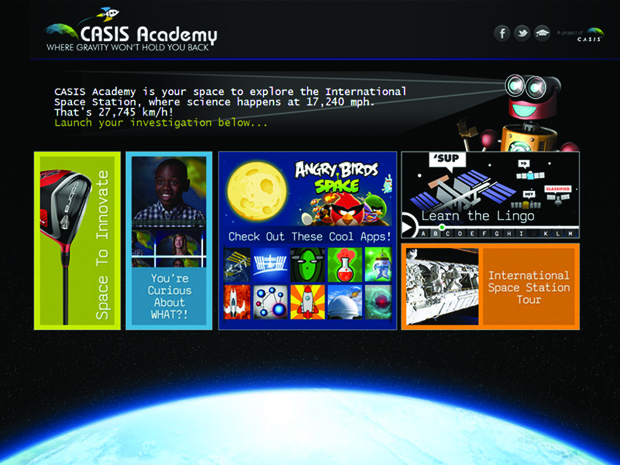
Geared toward students in the middle grades, when perceptions of science tend to become entrenched, the site frames the research taking place onboard the ISS in relevant and tangible ways via accessible and familiar formats. The site’s instructional design encourages “Web ADD”—that phenomenon where what starts as a short online query turns into a circuitous online quest bouncing from topic to related topic. In the vernacular of instructional design, it’s a nonlinear, immersive experience built on multiple entry points and constant inclusion of contextual links.
Inquiry Example: What’s a Polymer?
An example from CASIS Academy shows this approach to its design and functionality. Imagine that you’re interested in learning about polymers:
- You begin by looking up polymer in the site’s “Learn the Lingo” glossary. This multimedia definition treats you to a one-minute animated explanation that defines the term and connects it to ISS research.
- The Explore More links that accompany the definition entice you to keep going, taking you to a short video of a teenager asking “You’re curious about what?!” This guy is not sure why the ISS even exists. (You wonder about that, too.)
- Instead of seeing what other teens and tweens are curious about, you decide to investigate one of the Explore More links related to your curiosity about the ISS. And it points you to the “Shapeable Metals” page in the site’s “Space to Innovate” section. It looks like an Amazon product page devoted to ISS research on shapeable metals, with features such as descriptions, reviews, and ratings, and it lets you rate and review the product. You notice that the section includes other products.
- However, with your curiosity piqued like that kid on the video, and more questions than answers, you decide to learn more about the ISS itself. So you take the ISS Tour. The slideshow tour offers great visuals as well as a good sense of the ISS’s size and layout, the day-to-day living on the ISS, and more details about the research that takes place on the station. A video tour is just a click away, should you want even more.
And that’s just one possible path of inquiry. Others with different interests might enter at different points and draw on different contextual links. Experiences will differ in destinations and in dedicated time. Moreover, the wealth of content housed in a site that prompts nonlinear explorations encourages users to experience CASIS Academy multiple times in multiple ways.
Educator resources: How Do They Complement the Website?
Does this type of Web experience seem like the kind that is created for and limited to classroom use? Although CASIS Academy is certainly educational, it’s intended to look and feel more like a site that has nothing to do with curricula—to students, that is.
To educators, CASIS Academy is intended to complement curricular resources that live elsewhere. The “Educator” section of the main CASIS Web site has an extensive library of lesson plans. At their core, all the lesson plans have hands-on experiments and activities that address middle-grades science standards.
Each lesson plan also connects what students do and explore in the classroom with the work of ISS scientists. In the process, students are much more likely to perceive their work in the classroom and scientists’ work on the station as tangible and relevant. It should be no surprise that their levels of interest, motivation, and understanding increase in the process, too.
SUSTAINABLE STEM Shift: Why Foster Mindsets?
And as important as it is to frame ISS research and the scientific concepts that the research illustrates in tangible and relevant ways, it’s still not enough to shift the STEM paradigm in the United States. CASIS Academy, in conjunction with the teacher resources, strives to foster cognitive skills that define the best students, the best scientists, and even the best entrepreneurs. They’re the skills that prompt and propel inquiry—that is, the ability to:
- observe
- discover opportunities to solve problems
- experiment
- take calculated risks through trial and error
- persevere to succeed.
This mindset led to an audacious idea for international collaboration—to create, launch, and sustain a one-of-a-kind research facility in space. It’s also the mindset that will reap benefits in the future (both immediate and long term).
Without people wondering why, contemplating how, or simply questioning why not, humanity would not have explored, discovered, and advanced. And it’s not simply advancement in our understanding of scientific concepts; it’s advancement in technology and in how we live.
With CASIS Academy as its centerpiece, CASIS Education will continue to positively influence students’ mindsets in their perceptions of science and research and in their abilities to apply scientific habits of mind to their everyday lives.
Bruce Nofsinger (bruce@topicseducation.com) is the cofounder of Topics Education and the creator of the CASIS Academy Website.
[/accordion]
Not Your Normal Science Projects
National Design Challenge
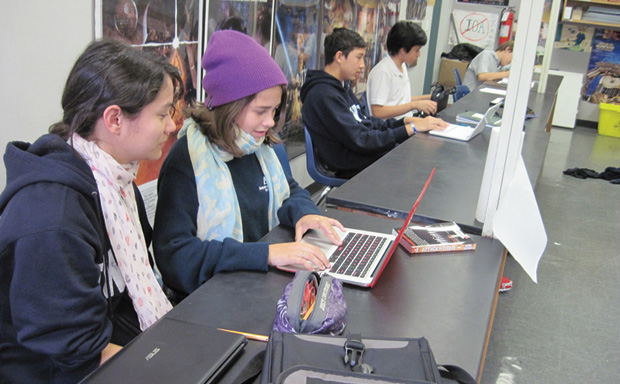
Imagine sending your research to the ISS—an incredible experience even for a veteran researcher. Now consider a middle school science student and multiply that enthusiasm by a thousand. CASIS has developed a national STEM education campaign to pique student interest in space science and create hand-son learning opportunities in the classroom. The National Design Challenge (NDC) gives educators and students unparalleled access to the ISS. This yearlong program provides professional development for educators as well as mentors for students to help design and implement student experiments for space.
Infinity Aerospace and NanoRacks are two industry partners that support the NDC. Infinity Aerospace designs the ArduLabs that house the experiments. Each ArduLab includes a simple programmable microcontroller that allows for automation, control, and data collection. The Arduino-based technology within each ArduLab can accommodate sensors, cameras, and motors. NanoRacks helps with payload development, and the CASIS operations team ensures that experiments selected for flight are secure and satisfy flight requirements. The NDC is a perfect platform to cultivate students’ interest in research as they work side by side with STEM mentors, industry personnel, and classmates.
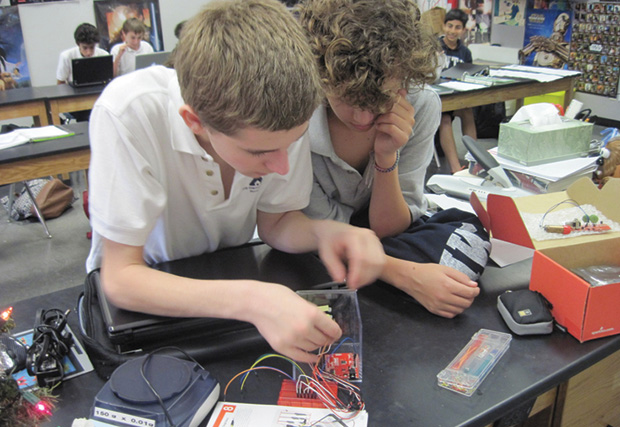
CASIS Academy Live
CASIS Academy Live, a Florida-based educational initiative, gives local students the opportunity to trade their normal school attire for lab coats and interact with ISS researchers for an entire day. Educators and students learn about ongoing ISS research and the range of scientific disciplines being explored in space. CASIS speakers include researchers, astronauts, and STEM advocates, who encourage students to participate in STEM courses and pursue STEM careers.
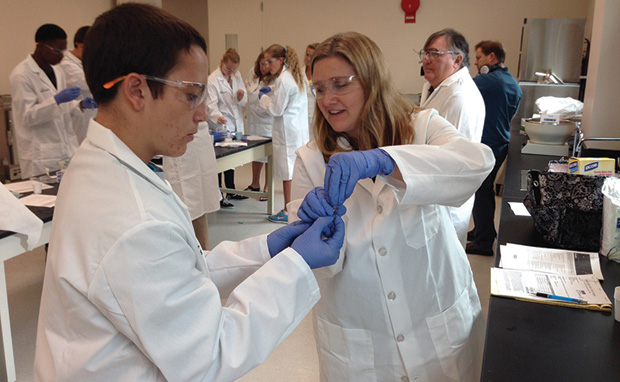
Past topics have explored microbes in space and whether cell phones would work in space. CASIS Academy Live lets students step out of the classroom and away from textbooks to experience science in a new way, and the exposure students receive through CASIS Academy Live has the potential to foster lifelong interest in STEM.
Zero Robotics Middle School Program
CASIS also sponsors the Synchronized Position Hold, Engage, Reorient, Experimental Satellites (SPHERES) Zero Robotics Competition, a fun and active middle-grade STEM program. During the five-week summer program, students work with mentors from the Massachusetts Institute of Technology, prominent scientists, and program staff to learn about programming, robotics, and space engineering. Students then use their new knowledge to program SPHERES. The program culminates in a final on-orbit tournament, in which each team’s SPHERES robot will battle for spots to operate on the ISS. Participants see their SPHERES in space via live feed and communicate directly with ISS crew members.
Student Spaceflight Experiments Program
Created by the National Center for Earth and Space Science Education, the Student Spaceflight Experiments Program (SSEP) gives hundreds of students across a community the ability to design and propose experiments to fly in low Earth orbit on the ISS. CASIS sponsors Missions 3–6 of this program. The first suite of student experiments ranged from studying cells to plant biology.
SSEP Fibroblast Division
Eleventh-grade students from San Marino, California, designed an experiment to observe how microgravity affects cell division.
SSEP Eggshells and Vinegar
Eighth-grade students from Pennsauken, New Jersey, designed an experiment to determine whether eggshell disintegration rates in vinegar differ in microgravity environments, an experiment aimed toward dental product development.
SSEP Germination of Cabbage Seed
Fifth-grade students from Willis, Texas, designed an experiment that will test Savoy cabbage in space to see whether the seeds will germinate more fervently.
Story Time from Space
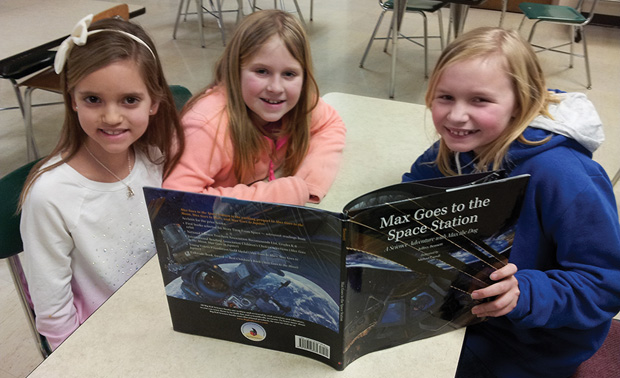
What’s the perfect venue for reading a book? A comfy chair is nice, but try floating around in the cupola aboard the ISS. Story Time from Space is an advocacy STEM project that combines STEM literacy with simple science demonstrations. The project includes videotapes of astronauts reading selected stories from the cupola of the ISS and conducting simple physics demonstrations that complement STEM concepts in the book.
The launch of this exciting STEM literacy initiative featured the Max Goes to the Space Station book series written by Dr. Jeff Bennett and NASA Astronaut Alvin Drew. This initiative is intended to stimulate interest in reading and space science as well as introduce students to many of the astronauts who live and work on the ISS.
International Space Apps Challenges
Ready, set, code! Aside from CASIS’s initiatives, a plethora of STEM education programs focus on space science. Several successful educational campaigns incorporate current technology and social media to connect participants.
One of the largest space-centric education initiatives is the NASA-sponsored International Space Apps Challenge. This worldwide competition pairs bright young minds from across the globe through technology to collaborate on real-time problems related to space exploration and life on Earth. The goal is to produce open-source solutions that address global needs. NASA has outlined 40 challenges from the previous Space Apps Challenge that fall under five categories: Earth watch, technology in space, human spaceflight, robotics, and asteroids. Although participants can work independently, the purpose of the challenge is to encourage students to work with a global network of thinkers and problem solvers to present viable solutions.
NASA uses this challenge to drive innovation through nontraditional channels. Across the globe, local communities, universities, and community groups host physical Space Apps Challenge sites, allowing participants to come and work with others in those particular regions. For 48 hours, 12–13 April 2014, synapses sparked as competitors raced to develop their open-source solutions. Local judging occurred at the end of the event, evaluating projects for best use of data, best use of hardware, best mission concept, galactic impact, and most inspiring. A local finalist from each challenge category will advance to the global round, where NASA judges will review projects according to impact, creativity, product, sustainability, and presentation.
Participants and interested parties can connect and learn about meeting locations and various challenges via social media and the Space Apps Challenge Web site.
NASA HUNCH Program
One might surmise that all of the training hardware, cargo storage, and transfer equipment that NASA uses would be designed exclusively by engineers. If so, you might be surprised to learn that high school students across the United States are being introduced to STEM disciplines by helping to create these hardware materials for NASA through the High School Students United with NASA to Create Hardware (HUNCH) Program. The student-produced materials include cargo transfer bags, maintenance work area enclosures, cold-stowage cargo restraints, ice brick belt assemblies, and contingency water containers. This program not only sparks students’ interest but provides them with a great sense of involvement in NASA’s mission, as the student-produced materials are actually used. For more about this excellent program, visit www.nasahunch.com.
NASA Digital Learning Network
NASA’s Digital Learning Network (DLN) is a free interactive platform that connects students with NASA education specialists and subjectmatter experts. DLN also archives a variety of STEM lesson plans for teachers to use in the classroom. The DLN Web site regularly features live Webcasts with NASA personnel, researchers, and STEM advocates. Since DLN is accessible anywhere via the Internet, this is a great resource that allows teachers and students the opportunity to learn about ongoing NASA efforts, ISS research, and many other interesting topics. CASIS regularly partners with NASA DLN to broadcast CASIS Academy Live speakers.
A Group Effort
The adage “each one, teach one” is sometimes too loosely used when advocating for community support, but it applies to the current state of U.S. education. Community enrichment programs, STEM advocacy organizations, parent–teacher committees, and after-school programs all play a vital role in student development. Education isn’t solely a matter of public funding and policy. If we hope to prepare future generations to explore space and solve yet-unforeseen engineering challenges, education requires citizen involvement and supporting grassroots initiatives and national programs, such as the ones described here, designed to complement classroom curriculum and expose students to new opportunities.



